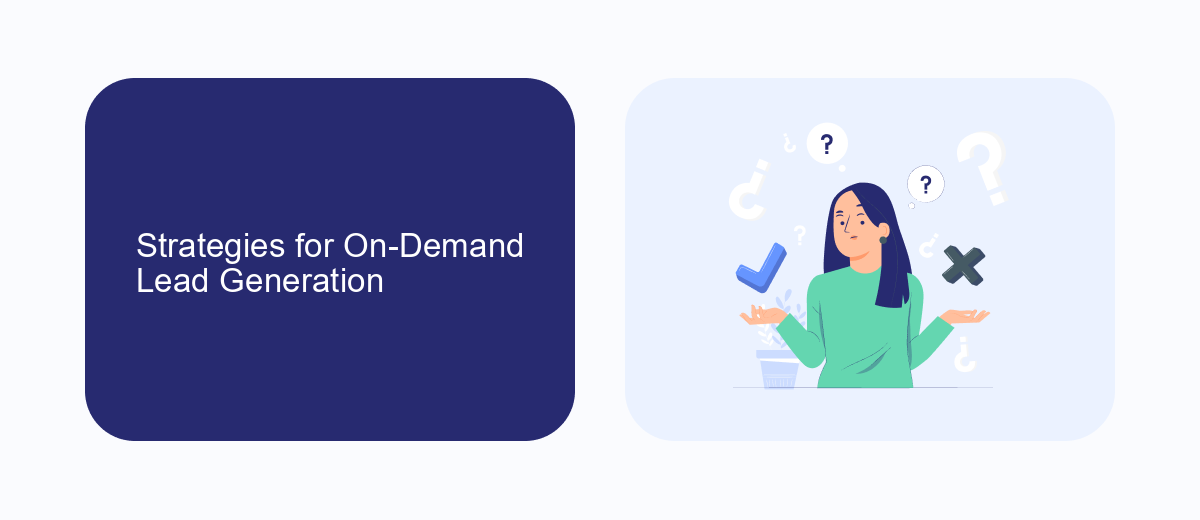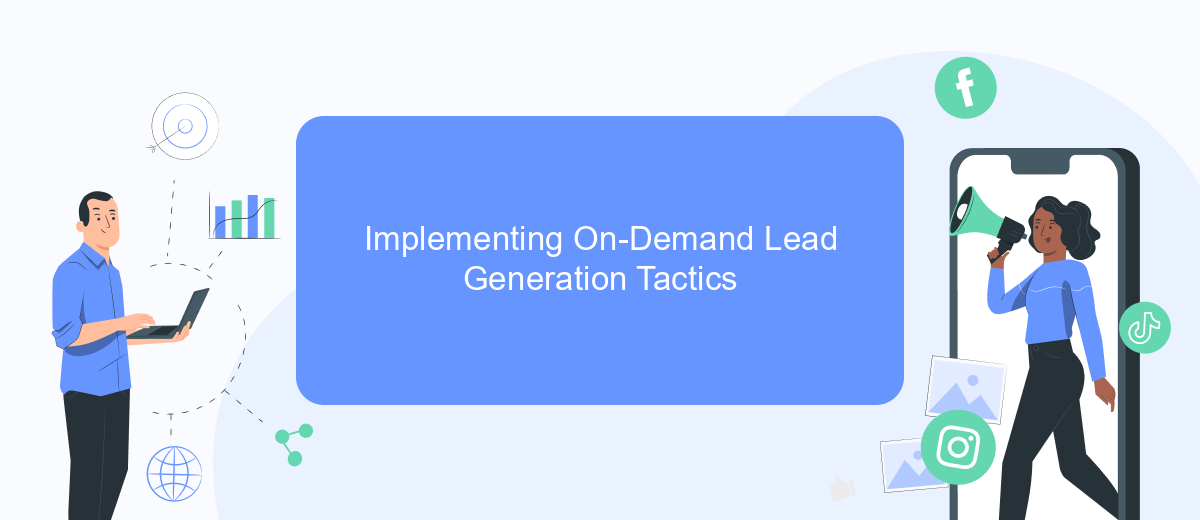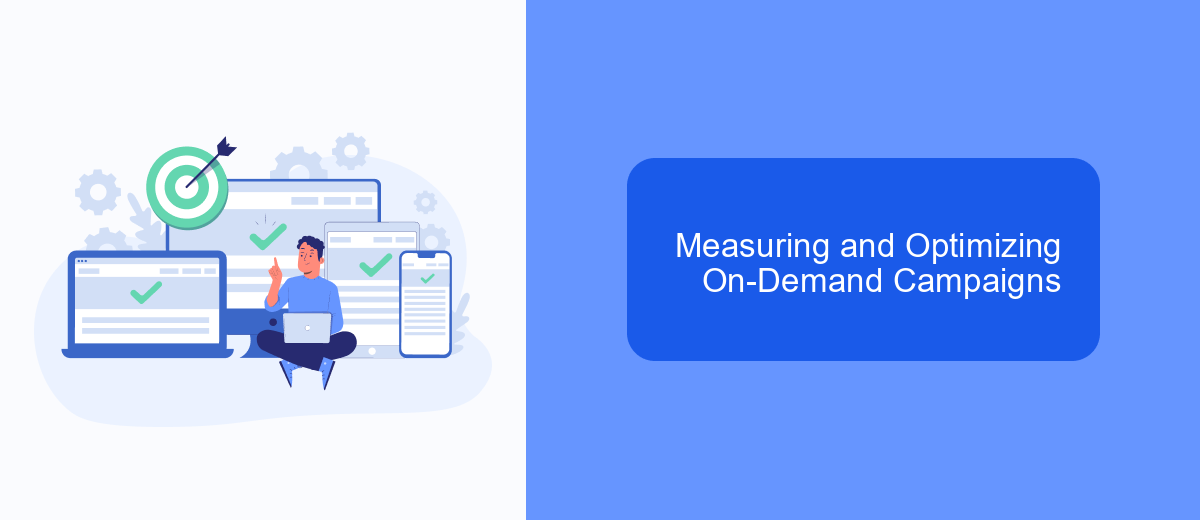In today's fast-paced business landscape, on-demand lead generation has emerged as a crucial strategy for companies seeking to stay competitive and agile. By leveraging advanced technologies and data-driven insights, businesses can efficiently identify and engage potential customers at the right moment. This approach not only optimizes marketing efforts but also enhances conversion rates, making it an indispensable tool for growth and success in the digital age.
Understanding On-Demand Lead Generation
On-demand lead generation is a dynamic approach to acquiring potential customers exactly when they are needed. This method leverages technology and data-driven strategies to identify and engage with prospective clients, ensuring a steady pipeline of leads tailored to specific business needs. Unlike traditional methods, on-demand lead generation is more flexible and responsive, allowing companies to scale their efforts up or down based on current demand.
- Utilizes advanced analytics to target the right audience.
- Enables real-time adjustments to lead generation strategies.
- Integrates with CRM systems for seamless lead management.
- Optimizes marketing spend by focusing on high-conversion prospects.
By adopting on-demand lead generation, businesses can enhance their marketing efficiency and effectiveness. This approach not only reduces the cost per lead but also improves the quality of leads generated. As a result, companies can achieve higher conversion rates and better align their sales and marketing efforts with their overall business objectives. Embracing this model allows for more agile and targeted marketing strategies that can adapt to the ever-changing market landscape.
Strategies for On-Demand Lead Generation

To effectively generate leads on demand, businesses should leverage a combination of digital marketing strategies tailored to their target audience. One effective approach is utilizing targeted social media advertising to reach potential leads where they spend most of their time. Platforms like Facebook and LinkedIn offer advanced targeting options, allowing businesses to focus on specific demographics, interests, and behaviors. Additionally, creating valuable content, such as ebooks or webinars, can attract and capture leads by offering solutions to their problems or insights into industry trends.
Integrating automation tools can significantly enhance lead generation efforts by streamlining processes and ensuring timely follow-ups. Services like SaveMyLeads can be instrumental in automating the transfer of lead data from platforms like Facebook Ads directly into your CRM or email marketing system. This not only saves time but also reduces the risk of human error, ensuring that leads are efficiently nurtured. By combining targeted outreach with efficient data management, businesses can maintain a steady flow of high-quality leads, ready to be converted into loyal customers.
Implementing On-Demand Lead Generation Tactics

Implementing on-demand lead generation tactics requires a strategic approach to effectively capture and convert potential customers. The dynamic nature of on-demand strategies allows businesses to respond quickly to market changes and customer demands, ensuring a steady flow of qualified leads. By leveraging technology and data analytics, companies can optimize their lead generation efforts to target the right audience at the right time.
- Utilize data analytics to identify and target high-potential customer segments.
- Implement real-time engagement tools such as chatbots to interact with website visitors instantly.
- Leverage social media platforms for targeted advertising and lead nurturing campaigns.
- Create compelling and personalized content to attract and retain customer interest.
- Continuously monitor and adjust strategies based on performance metrics and feedback.
By integrating these tactics, businesses can enhance their lead generation processes, ensuring they are both efficient and effective. The key is to remain agile and adaptable, continuously refining strategies based on real-time data and market feedback. This proactive approach not only maximizes lead generation potential but also fosters stronger customer relationships and drives business growth.
Measuring and Optimizing On-Demand Campaigns

Measuring the success of on-demand lead generation campaigns is crucial for understanding their effectiveness and identifying areas for improvement. By using a combination of quantitative and qualitative metrics, businesses can gain insights into how well their campaigns are performing and where adjustments might be needed. This process involves tracking key performance indicators (KPIs) such as conversion rates, cost per lead, and return on investment (ROI).
Optimization of these campaigns requires a strategic approach, focusing on continuous improvement and adaptation. By analyzing data and feedback, businesses can refine their targeting, messaging, and delivery methods to enhance overall performance. This iterative process ensures that campaigns remain relevant and effective in reaching their intended audience.
- Monitor conversion rates to assess the effectiveness of lead capture strategies.
- Evaluate cost per lead to ensure budget efficiency and maximize ROI.
- Analyze audience engagement and feedback for insights into campaign performance.
- Test different messaging and channels to identify the most effective approaches.
Regularly reviewing and adjusting on-demand campaigns based on these metrics helps businesses stay competitive in dynamic markets. By embracing a data-driven approach, companies can optimize their lead generation efforts, ensuring sustained growth and success in capturing high-quality leads.
Future Trends in On-Demand Lead Generation
The future of on-demand lead generation is set to be revolutionized by advancements in artificial intelligence and machine learning. These technologies will enable businesses to target potential leads with unprecedented precision, analyzing vast amounts of data to identify patterns and preferences. As a result, companies will be able to create highly personalized marketing campaigns that resonate more effectively with their audience. Additionally, the integration of AI-driven chatbots and virtual assistants will streamline the lead qualification process, ensuring that only the most promising leads are pursued, thereby optimizing resource allocation.
Another significant trend is the increasing importance of seamless integration between various marketing tools and platforms. Services like SaveMyLeads are at the forefront of this movement, offering solutions that automate the transfer of lead data between different systems. This not only enhances efficiency but also minimizes the risk of data loss or errors. As businesses continue to adopt more complex tech stacks, the demand for such integration services will grow, enabling companies to maintain a cohesive and streamlined lead generation process.
FAQ
What is on-demand lead generation?
How does on-demand lead generation benefit businesses?
What are some effective methods for on-demand lead generation?
How can businesses automate their lead generation process?
What challenges might businesses face with on-demand lead generation?
Don't waste another minute manually transferring leads from Facebook to other systems. SaveMyLeads is a simple and effective tool that will allow you to automate this process so that you don't have to spend time on the routine. Try SaveMyLeads features, make sure that this tool will relieve your employees and after 5 minutes of settings your business will start working faster.
